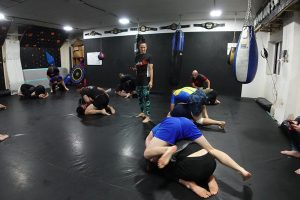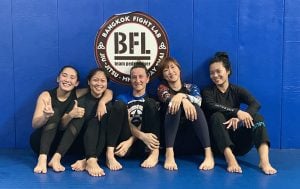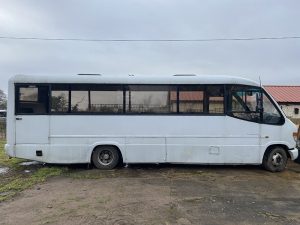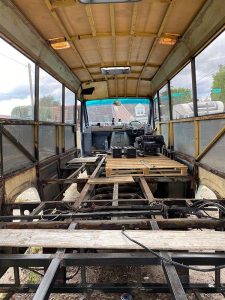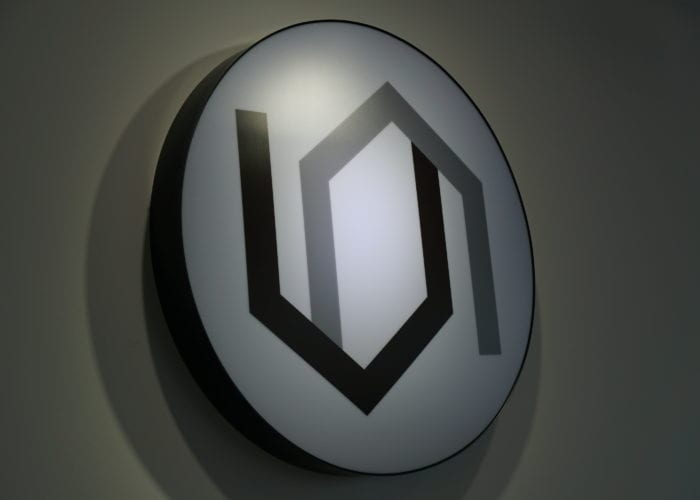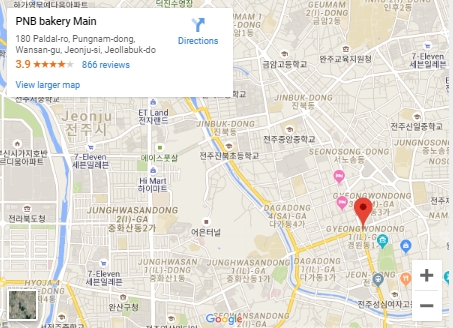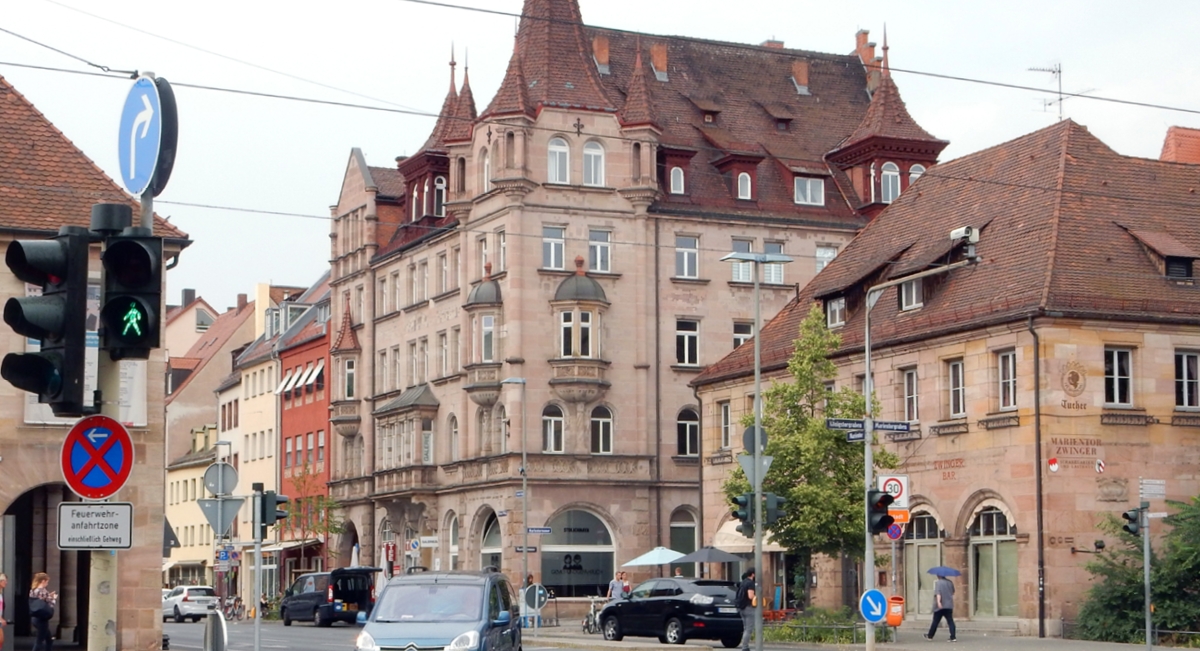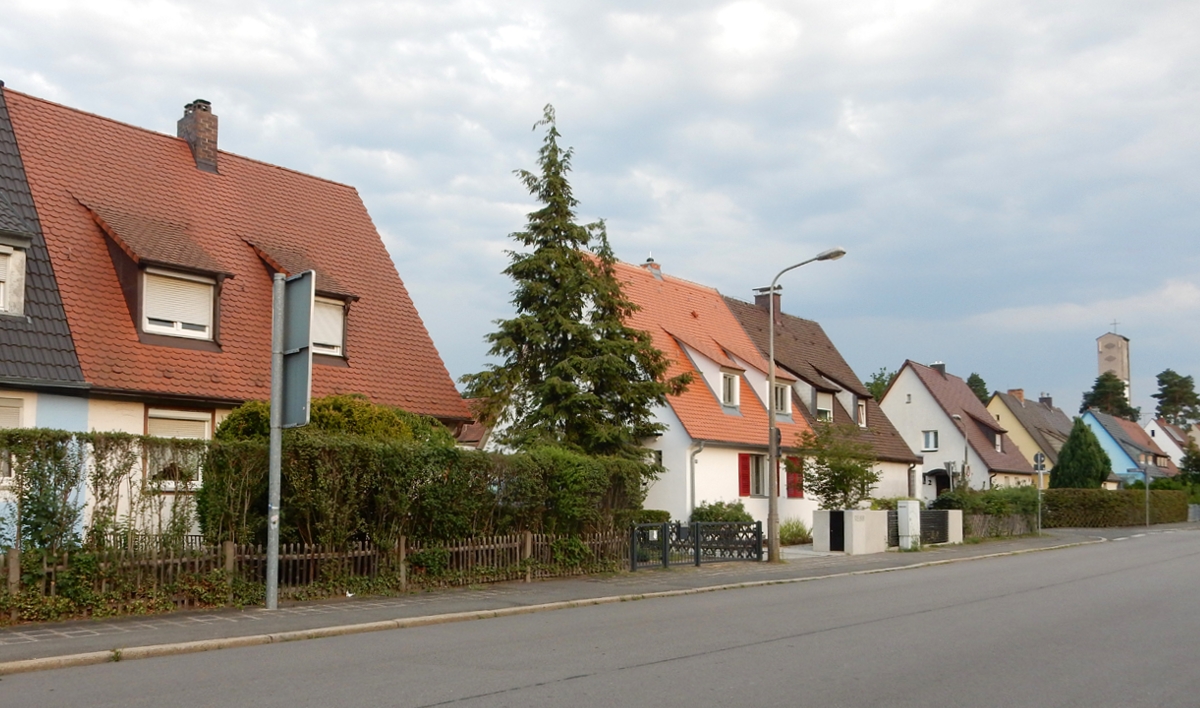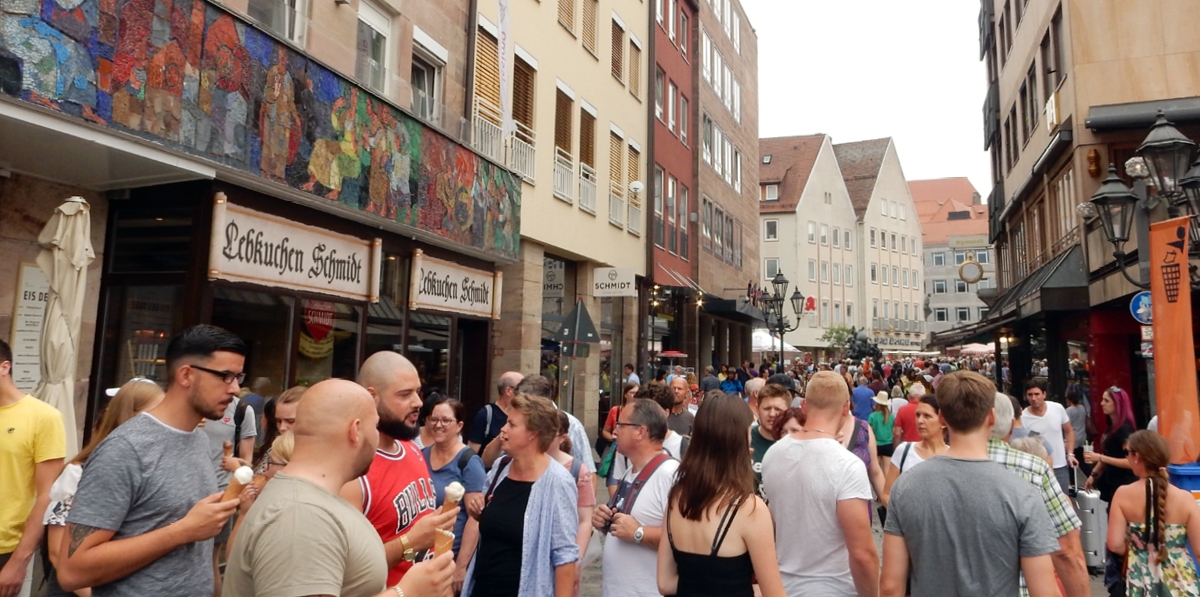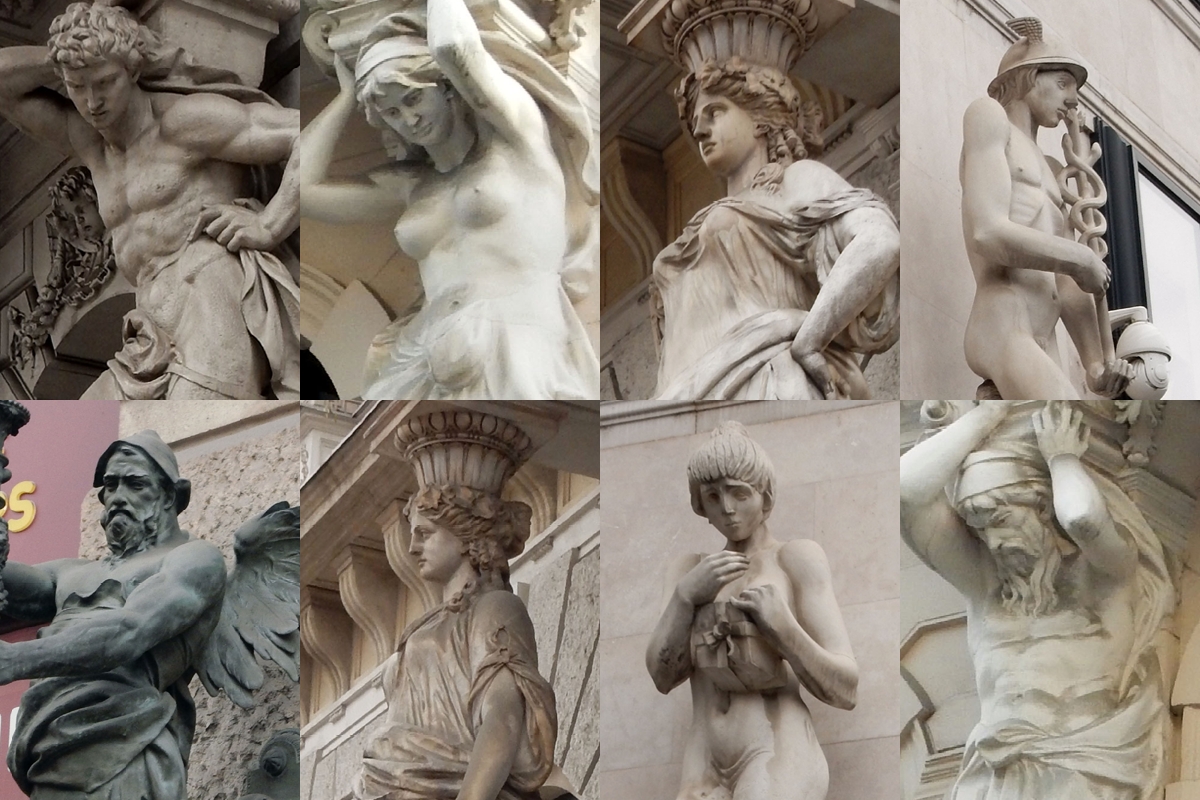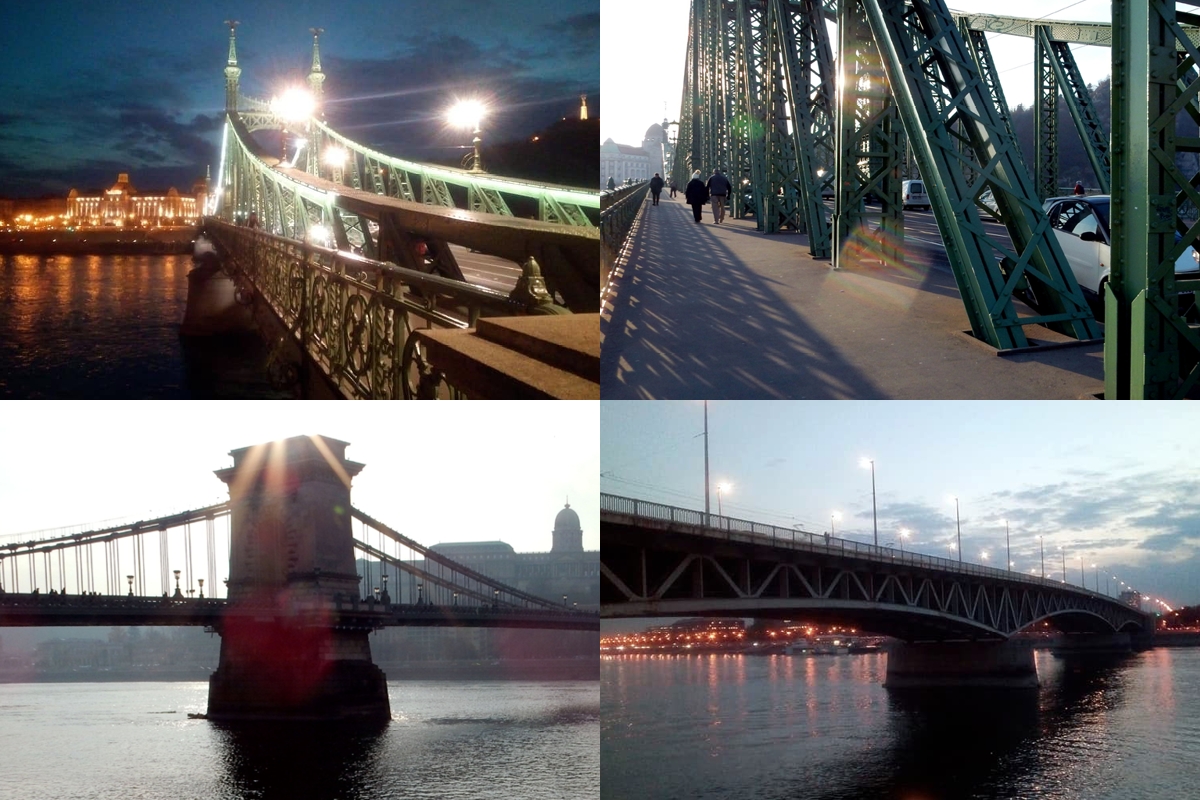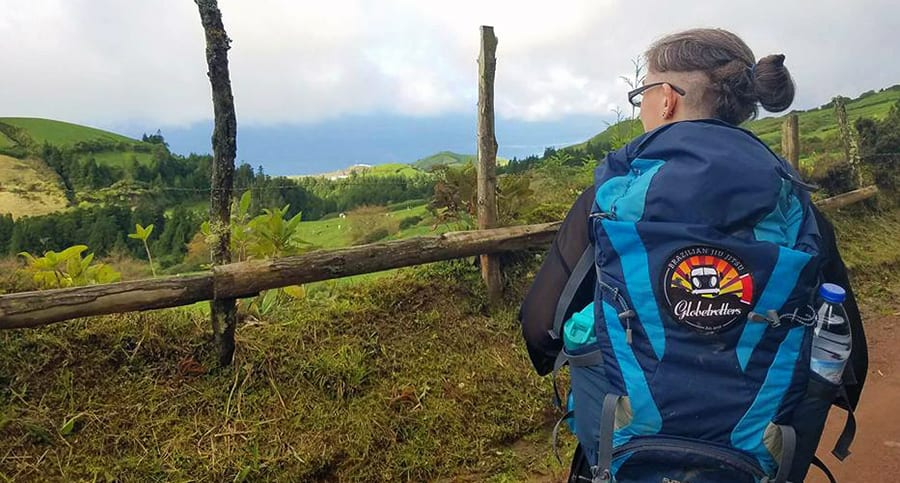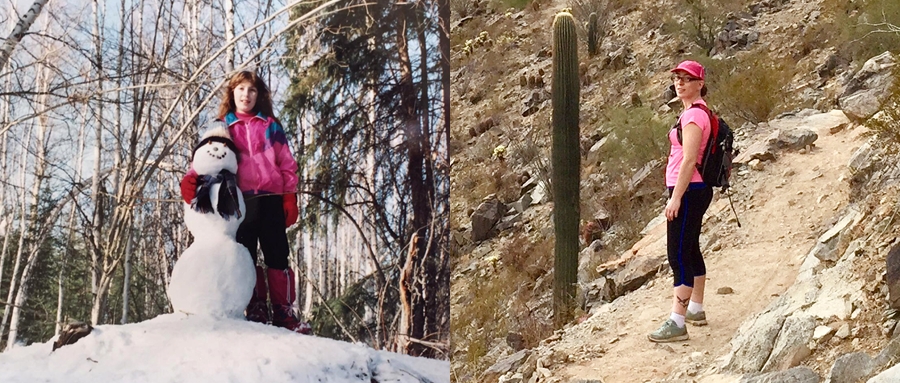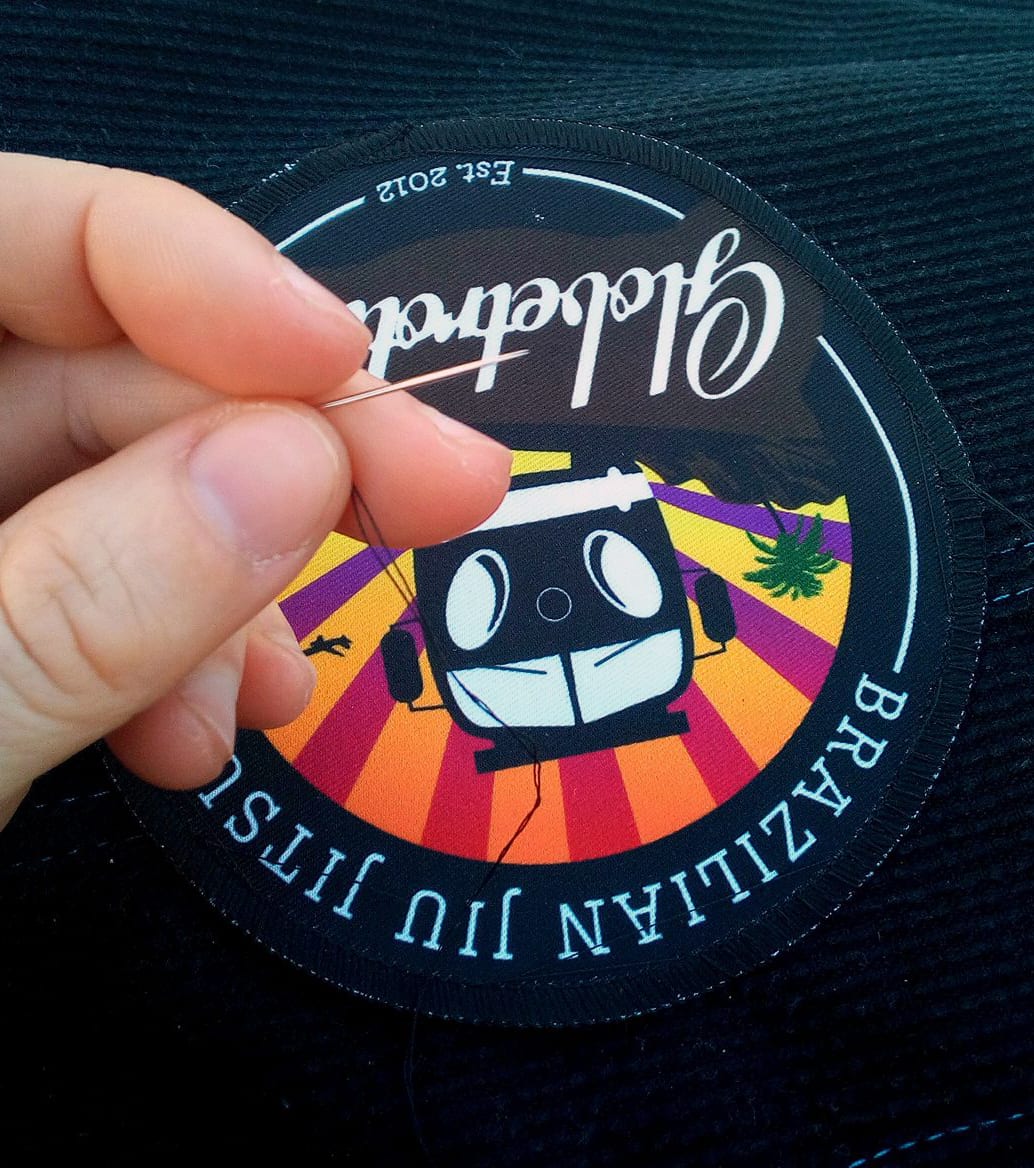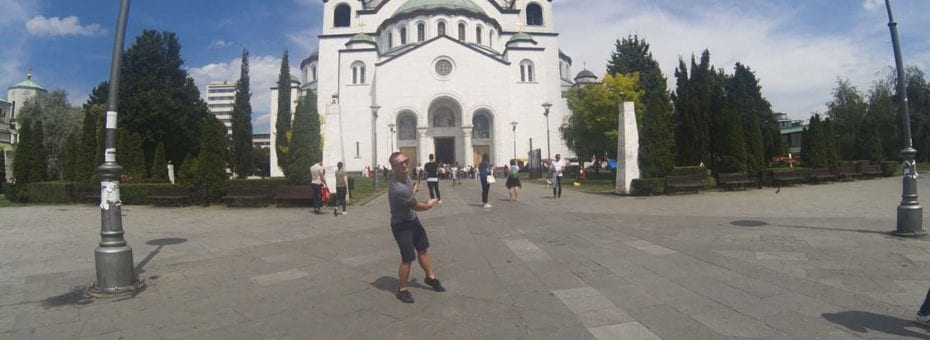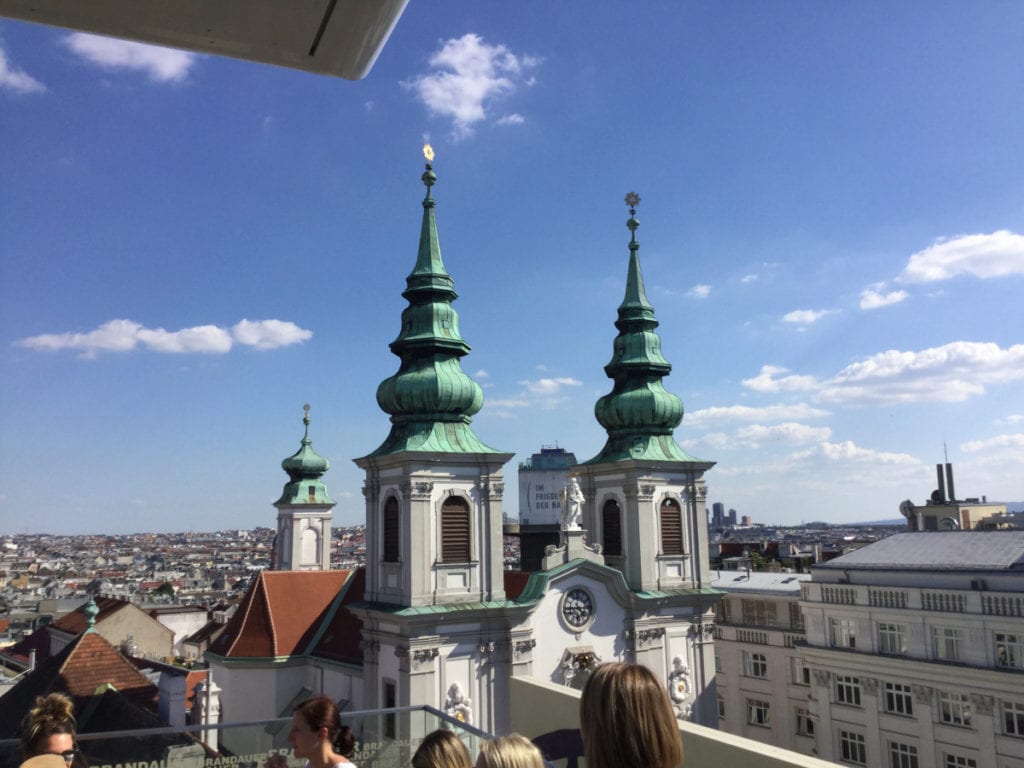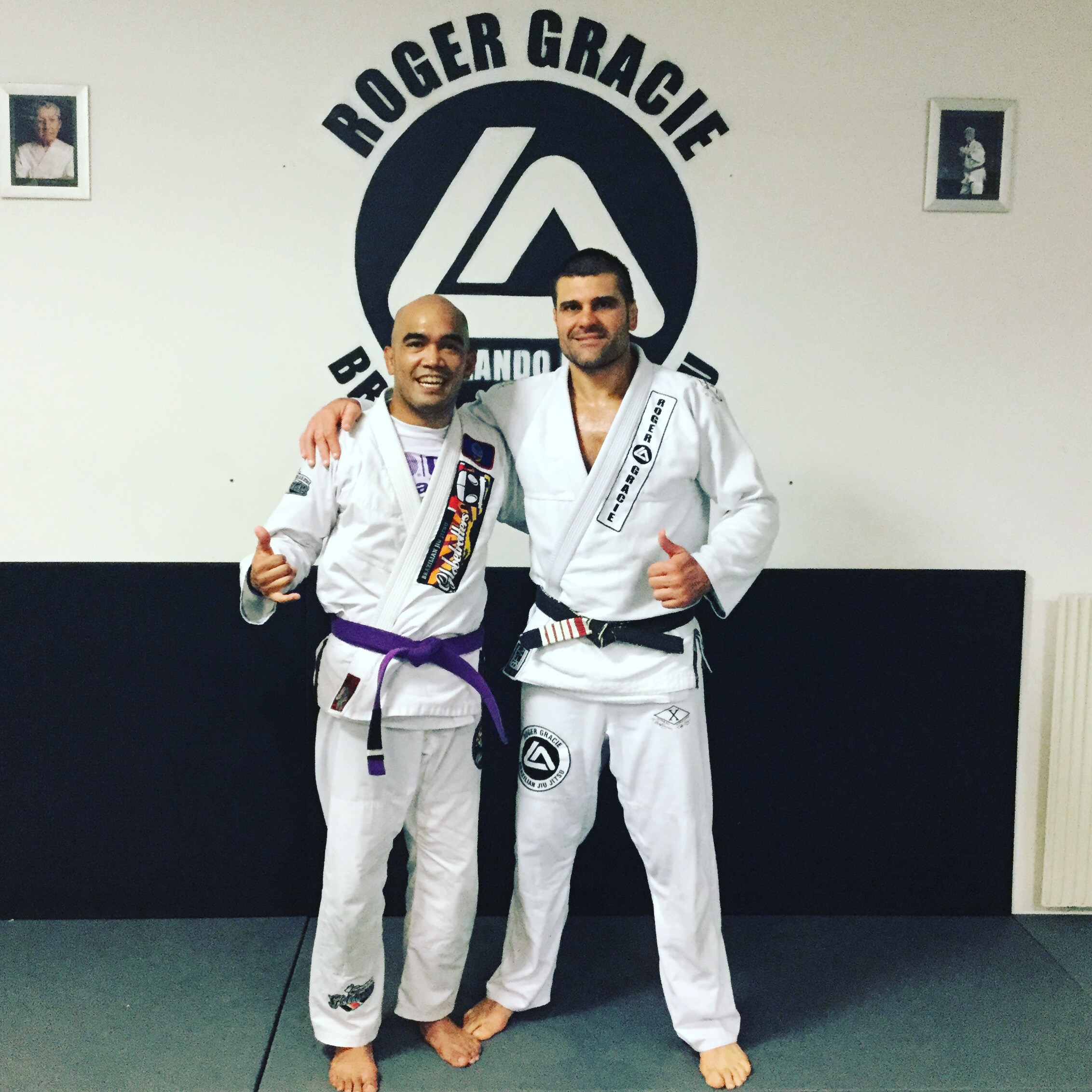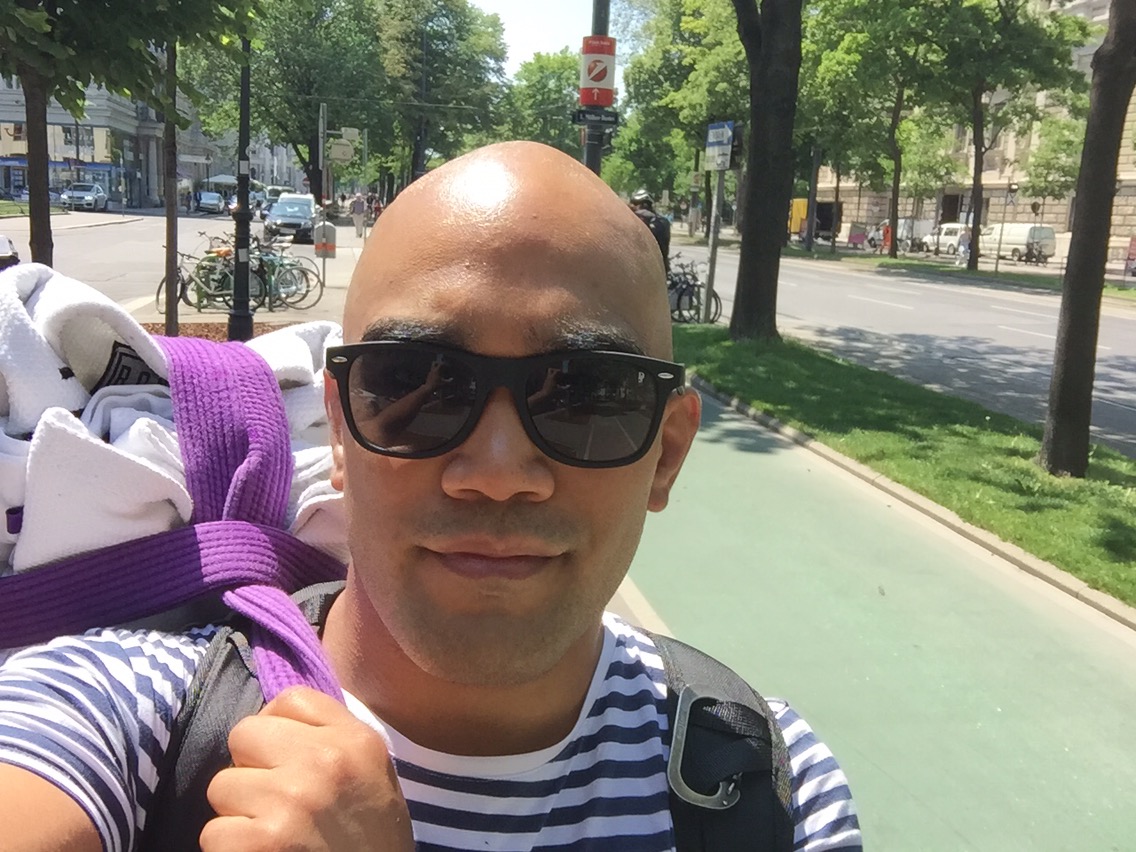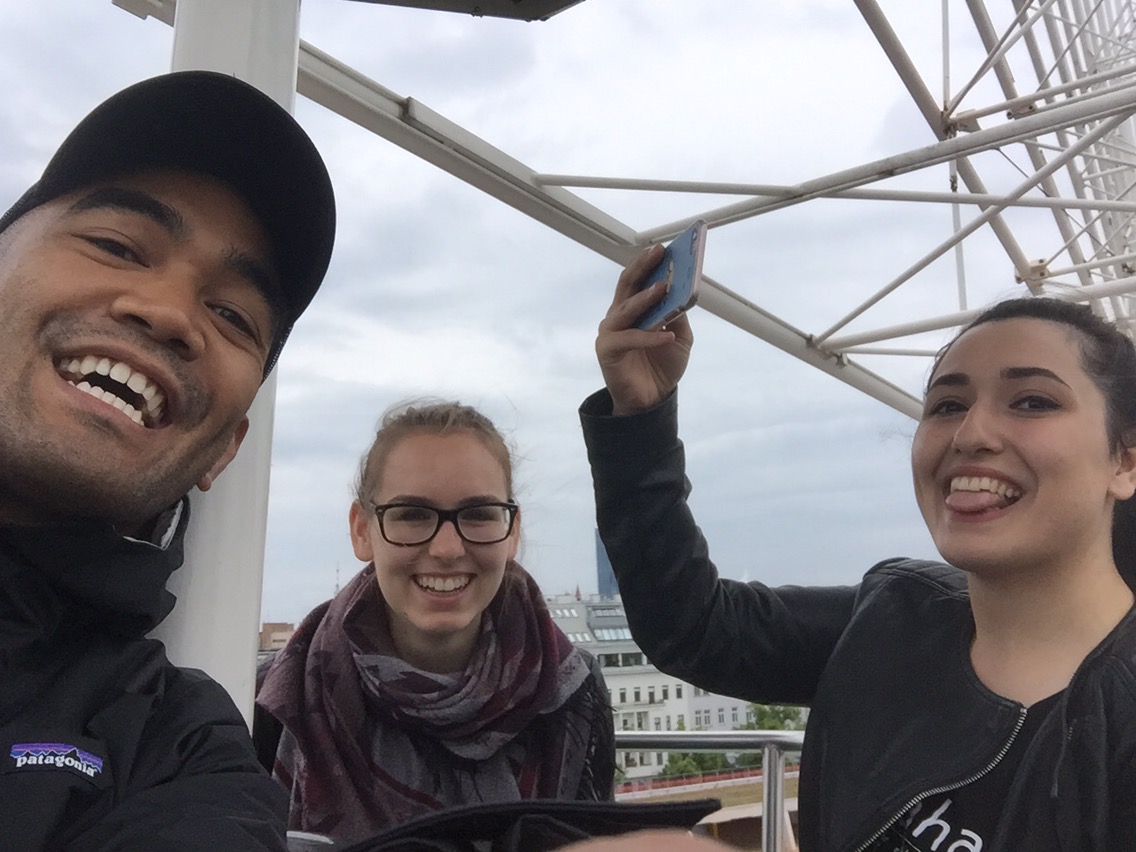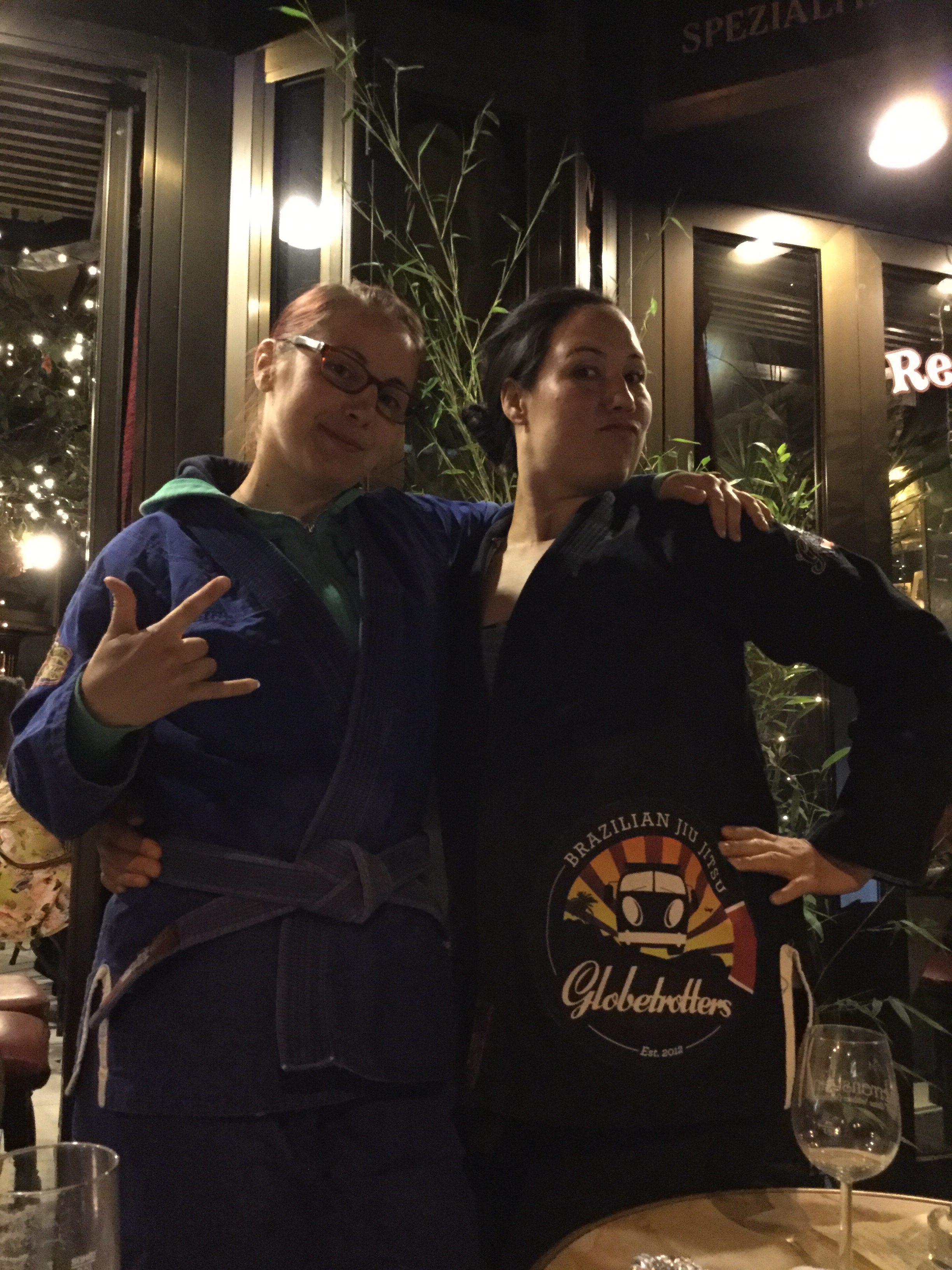Travelling and Training Martial Arts in the 90’s
Before BJJ
Back in the mid 90’s in my late teens/early 20’s I wasn’t aware Brazilian Jiu Jitsu existed. I was training other martial arts. I started with Taekwondo but soon lost interest in that when my best friend Rich introduced me to Wing Chun.
Later I would also mess around with a little JKD and Kali and much later Boxing and Muay Thai, before finally giving up all forms of striking in my late thirties for pure grappling only.
I don’t know why I’m high kicking this dummy, there’s no high kicks in Wing Chun 😆
I trained Wing Chun with Rich for around six years, at first with Sifu Anton Van Thomas in various parts of London and Surrey and then Rich and I left for Hong Kong to train with the late Grandmaster Ip Ching, the youngest son of Ip Man, who’s since been cemented in martial arts history with a string of part biographical, part fictional movies.
His older brother Yip Chun was more famous but was getting pretty old and frail by then and we were far more taken by the much younger, more sturdy and robust brother who taught at the Hong Kong Ving Tsun Athletic Association in Mong Kok where we travelled to classes by bus, ferry and then MTR, twice a week from our beachside apartment on Lantau Island.
We also arranged weekly private lessons at his home, a modest apartment where he and his wife lived, which also housed his father’s wooden dummy, the same dummy Bruce Lee had learnt on many years before, which felt like a ridiculous honour for two young foreigners obsessed with martial arts.
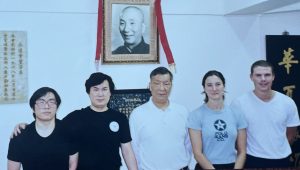
Terrible quality photos but it’s all we have, this was pre smart phones and it’s only due to Rich having a camera that we have anything at all.
Training in Hong Kong
There was only just enough room in that apartment to complete all three hand forms, Mook Yan Jong (wooden dummy), Baht Cham Do (butterfly knives) and Lok Dim Boon Kwan (6 and a half point pole), though I’m sure we almost put holes in their wall on a few occasions.
Grandmaster Ip Ching did not speak any English so a student of his was kind enough to join almost every session to translate for us. There were a couple of occasions where he wasn’t there and we muddled through but there was definitely one very memorable time for me, where both the translator and Rich were not able to come and I found myself alone with the Grandmaster for our private session. The training was fine but a two hour class is a long session and we’d always stop for a break half way through where his wife would bring us tea and we would sit for a few minutes before resuming training. I had spent a year previous to our first trip trying to learn Cantonese but now I’m trying to learn French I know that an hour’s class once a week was next to worthless. In that awkward break I got my notebook out and tried to say a few basic things. Suffice to say he politely shook his head and hand, very clearly saying “I don’t know what you’re trying to say and I never will, please stop”. I did stop and never tried again 🤣
We spent six months in Hong Kong and a year or so later we returned again for another three and a half months. Both trips we were able to stay at my Godmother’s little holiday apartment on the beach, which was as memorable a part of the whole experience as the training.
It was pretty dirty and basic with cockroaches, geckos and other wildlife often shacking up with us but we absolutely loved it. We ate instant noodles at the beachside cafes and played a lot of frisbee on the beach, the cleanest beach in Hong Kong at the time. We waited tables and bar tended, taught English and played a lot of pool at a bar near the ferry, sometimes winning enough prize money to pay for our food and drinks. Rich practised his magic tricks on the giggling local girls, we played chess late into the night, listened to music, watched movies, played table tennis at a local club and practiced our forms on our rooftop terrace.
Aside from our three trips into the city to train every week, we ventured further afield here and there too. We visited the Bruce Lee Cafe of course, a few other Wing Chun clubs including one at a University and we bought our own original Wing Chun Poles and Knives from a famous shop specialising in martial arts weapons.
We visited my Godmother every now and then, who lived with her young son in an apartment up in the hills and she sometimes invited us out on her friend’s boat or for a meal at the fancy Hong Kong Yacht Club. Through her we landed a job painting and decorating a beautiful house while the tenants were away and to this day I’m pretty sure we did a good job, even though we were so young and inexperienced.
At the end of our second trip Grandmaster Ip Ching gave us photocopies of his father’s recipe for Dit Da Jow, a famous blend of dried plants which are left for years to soak in rice wine and the resulting tincture used to treat bruising. It smells… unique… but it’s actually quite effective. Our friendly and helpful translator took us off to the Chinese medicine shops to buy the ingredients, which were vacuum packed for us and we managed to get home in one piece. That pack of dried bark and spices sat in my cupboard for years but eventually I did actually make a big flagon of it and it even made it out to Myanmar with me when I moved there years later.
After that second trip Grandmaster Ip Ching said he didn’t have anything left to teach us and we had to just keep practising what we’d learnt. He presented us with our Instructor Certificates and off we went to a local mall to have business cards made with shiny metallic embossed lettering with both English and Chinese characters.
I never really intended to teach but Rich returned for a forth trip a few years later and taught Wing Chun in London for many years. He always excelled at anything physical and was and still is an outstanding teacher. He’s a qualified swimming and tennis coach and now a BJJ black belt coach too and puts a lot of thought into his teaching.
On that second trip I had already started a business plan for a martial arts social club, which eventually did come to fruition a couple of years later, albeit in a slightly different form. Rather than try to describe Ginglik, the club in Shepherds Bush London which I owned and ran for 11 years with my boyfriend and business partner Colin, I have a video on my channel which will give you a good idea.
Play Fighting to BJJ
Before I discovered BJJ I had returned to Wing Chun after an eight year hiatus while running Ginglik, this time with Rich as my coach instead of training partner.
A bunch of Wing Chun buddies were round at my flat in London one evening and we started play fighting as we often did, which is always tricky when you only train a striking art. You can’t generally punch and kick your friends, though I’ve suffered plenty of dead arms and legs and dished a few out too. Not for the first time I found myself pinned to the floor and in that moment I knew the time had come to learn some grappling.
Having someone bigger and stronger sit on me and then pin my hands to the ground, was frustrating and scary and it made me appreciate how lucky I was to have only ever experienced it with my brother or other martial arts friends, whom I trusted. I never wanted to be in that position with someone I didn’t trust or who intended to harm me.
One of the guys told me a very reputable gym had just moved premises from Hammersmith, which wasn’t too far away, to a street just a short walk away. This gym was Carlson Gracie London and I soon rocked up one evening for a free trial class.
I was partnered with a brown belt guy who was around my size. He was so nice, patient and helpful and maybe if I’d had a very different experience that first class I would not have wanted to return. I wish I knew who he was so I could thank him now. Partly due to him I immediately fell in love with Jiu Jitsu and definitely wanted to keep training.
Carlson’s policy at the time was to encourage only serious students, so there was no drop in fee (even now this is discouraged with a very high drop in fee) and membership was priced such that only training several times a week made it reasonable. I was only able to train once a week at that time but I noticed that you didn’t have to be a member to take private lessons and that if you shared the private lesson with a friend you halved the cost.
I convinced several of my Wing Chun buddies to join me for private classes. Rich was one of them and our great friend Ash was another, now a brown belt. The others didn’t take to it quite the same! It’s not for everyone 😆
After about six months of these weekly classes, give or take a few, I left to go travelling for six months, intending to head straight back to resume training somehow, though with the club in London closed I wasn’t sure how I would earn a living or even afford to live in London. Turns out I never had to.
Thanks for reading,
Tammi
Next Time…
My first BJJ experience abroad, alone in Pattaya, Thailand on a Muay Thai camp with a visiting Aussie black belt teaching BJJ and some crazy Russians trying to break me, a week before I move to live in Myanmar and discover there’s no mats to train on, anywhere 😅

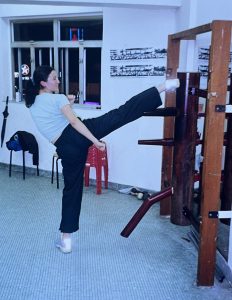
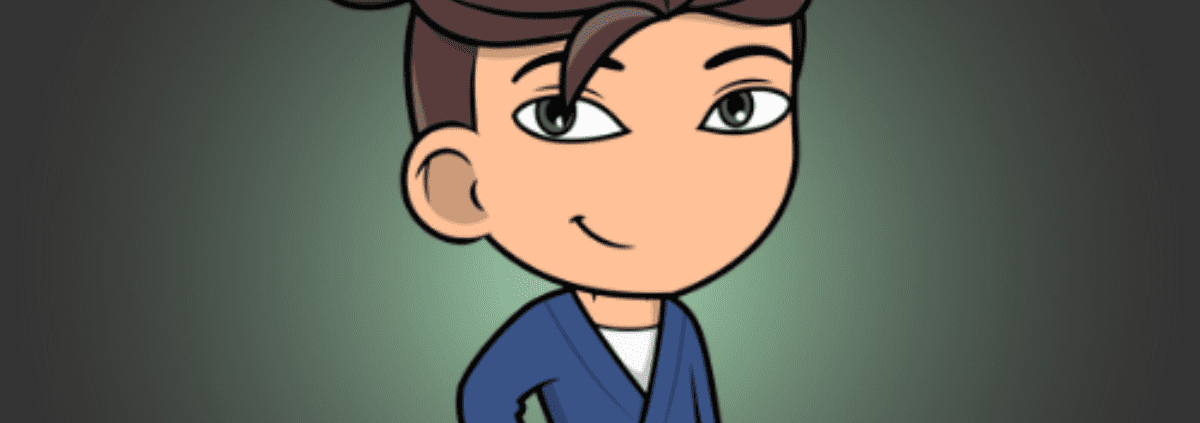
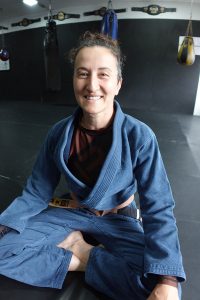 .
. 